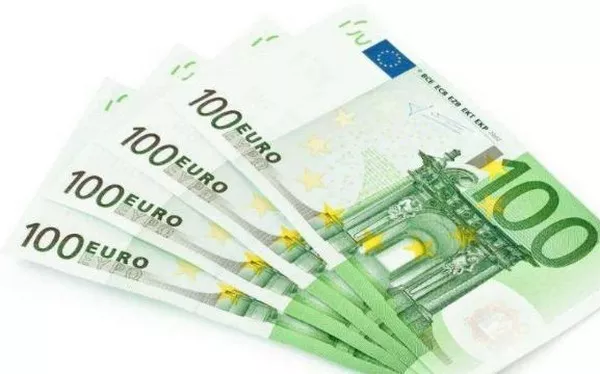In recent times, the Euro, the official currency of the Eurozone, has faced a noticeable decline in its value against major global currencies.
This development has raised concerns among economists, policymakers, and investors alike. To comprehend the reasons behind the Euro’s fall, it is crucial to delve into the multifaceted dynamics influencing this currency’s performance. In this article, we will explore the primary factors and ask the question: why is the Euro falling?
1. Economic Data and Divergence in Recovery Rates
One of the fundamental reasons why the Euro is falling can be attributed to economic data disparities among Eurozone member states. The European Central Bank (ECB) is tasked with maintaining price stability, but the varying economic conditions across member countries make this a formidable challenge. The Eurozone’s recovery from the COVID-19 pandemic has been uneven, with some countries rebounding faster than others. This divergence in economic performance creates uncertainty in the currency market, prompting investors to seek safer currencies elsewhere. Hence, a key factor in the Euro’s decline is the economic disparity among Eurozone nations.
2. Inflation Concerns
Inflation plays a pivotal role in determining a currency’s value. The Euro’s fall can be partly attributed to concerns over inflation within the Eurozone. Inflation rates have been on the rise in certain Eurozone countries, such as Germany, which is a cause for alarm among investors. The European Central Bank‘s commitment to maintaining price stability has come into question, especially with inflation surpassing the ECB’s target of 2%. Investors, fearing a lack of decisive action to combat inflation, are moving their assets to currencies that offer a more stable outlook. This uncertainty surrounding inflation is another significant factor explaining why the Euro is falling.
3. Monetary Policy Divergence
Monetary policy decisions by central banks significantly influence currency values. The divergence in monetary policies between the European Central Bank (ECB) and other major central banks, such as the Federal Reserve in the United States, is a critical factor in the Euro’s decline. While the Federal Reserve has begun tapering its bond-buying program and signaling a tightening of monetary policy, the ECB has been cautious and has not shown a willingness to follow suit. This policy divergence creates a more attractive environment for investors in other currencies, contributing to the Euro’s depreciation. Hence, differing monetary policies are another vital element explaining why the Euro is falling.
4. Political Uncertainty
Political factors can also weigh heavily on a currency’s value. The Eurozone has been grappling with various political uncertainties, which can undermine investor confidence in the Euro. Events such as Brexit and ongoing debates over the European Union’s future have added to the uncertainty surrounding the Euro. Moreover, the rise of populist movements in some Eurozone countries has raised concerns about potential policy shifts that could affect the currency’s stability. Political instability can be a significant reason why the Euro is falling, as it increases risk perception among investors.
5. Trade Imbalances
Trade imbalances between the Eurozone and other major trading partners can affect the Euro’s exchange rate. Persistent trade deficits in the Eurozone can lead to a decreased demand for the Euro in international markets, contributing to its decline. Additionally, the strength of the Euro can impact the competitiveness of Eurozone exports. A stronger Euro makes Eurozone exports more expensive for foreign buyers, potentially leading to reduced demand for Eurozone goods and services. Trade imbalances and their impact on the Euro’s value are another crucial aspect explaining why the Euro is falling.
6. External Shocks
External factors, such as geopolitical tensions and unexpected global events, can have a significant impact on currency markets. These external shocks can lead to a flight to safety, with investors seeking refuge in currencies like the US Dollar or Swiss Franc. Events such as the Russia-Ukraine conflict or the COVID-19 pandemic can trigger market volatility and uncertainty, causing investors to divest from the Euro. These external shocks highlight the vulnerability of the Euro to unforeseen events and emphasize why the Euro is falling during turbulent times.
7. Speculative Activity
Financial markets are influenced by speculative activities, and the currency market is no exception. Speculators often take positions based on expectations of future currency movements. In recent times, increased speculative activity betting against the Euro has put downward pressure on the currency’s value. Traders and hedge funds can exacerbate the Euro’s decline when they perceive weaknesses in the currency’s fundamentals, amplifying the negative sentiment surrounding the Euro.
8. Market Sentiment and Technical Factors
Market sentiment can be a self-fulfilling prophecy, as investor perceptions often dictate market movements. When negative sentiment prevails regarding the Euro’s outlook, it can lead to a downward spiral in its value. Additionally, technical factors, such as key support and resistance levels, can trigger sell-offs or buying rallies, further influencing the Euro’s direction. These sentiment-driven and technical factors play a role in explaining why the Euro is falling.
In conclusion, the Euro’s decline can be attributed to a combination of economic, monetary, political, and external factors. Economic disparities among Eurozone member states, inflation concerns, monetary policy divergence, political uncertainty, trade imbalances, external shocks, speculative activity, and market sentiment all contribute to the Euro’s weakening. Understanding these complex dynamics is essential for investors, policymakers, and economists to navigate the currency market effectively and anticipate potential future movements in the Euro’s value. While the Euro may face challenges in the short term, its long-term trajectory will depend on how these factors evolve and how policymakers respond to them in the coming years.
Related Topics:
German Bank: Eurozone PMI Data Unfavorable for ECB’s Potential Further Rate Hike
ING Group: Sluggish Economic Activity Coupled with High Wage Growth Makes ECB More Likely to Further Raise Rates
Capital Economics: Deteriorating Services Sector Worsens Eurozone Economic Woes


























